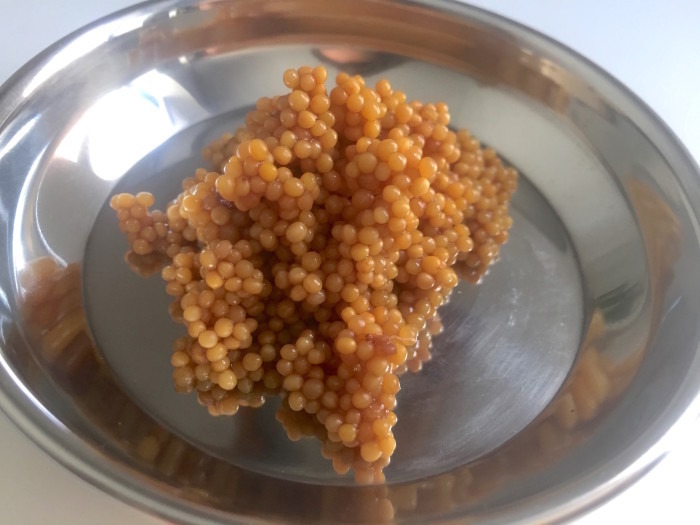Pickled Mustard Seeds: The Poor Man's Caviar
We may receive a commission on purchases made from links.
When I was a kid, I thought I didn't like mustard, but that was because the only mustard I had ever tried was the basic yellow stuff from a squeeze bottle. Then one day, making sandwiches at home with my dad, I decided to try some of the spicy brown stuff (because my dad loved it so much, and I wanted to see what the fuss was about). I still remember that sandwich. Pastrami on extra-sour rye with pickles, Swiss and spicy brown mustard. It was a game changer for me.
Fast-forward to today, and I'm basically a mustard fiend...except that basic yellow stuff. Still not a fan of that, though I can keep it down. I usually have at least six varieties of the stuff at home — after a recent spice and condiment buying excursion, that number was up to 15 — and each one is a unique snowflake deserving of its own love and affection. But you know about mustard. I know about mustard. We're not really here to talk about mustard, per se; we're here to talk about pickled mustard seeds.
What are pickled mustard seeds? Well, I think you can figure that out from its common nomenclature, but it's basically mustard seeds that have been pickled, as opposed to being ground into one of the myriad varieties of the condiment "mustard" you can find today. But why? What's the difference?
The main difference is in the flavor. Pickled mustard seeds are more about the added sweetness and tartness with a little bite from the seeds, whereas mustard proper is about the natural bite of the mustard seeds. The other major difference is the texture. Pickled mustard seeds are different from even whole-grain mustards in the way the little seeds pop in your mouth. It's a crunchy adventure that's a bit like caviar. Sisha Ortuzar, cofounder of NYC's 'WichCraft (they use pickled mustard seeds on their extremely delicious meatloaf sandwich), says, "It's about texture. The bloomed mustard seeds have a pop when you bite into them ... kinda like a (very) poor man's caviar."

So how do you get your hands on some poor man's caviar? If you see it at the store, you can buy it, but honestly I don't really see it around too much. But you know what you can find in cheap abundance? Mustard seeds and vinegar! Which means you can make some yourself, and you can make it just the way you want it. 'Wichcraft uses a pretty basic recipe (that you can find in their cookbook). That's really all you need, but if you want to mix it up a little, here's how.
Basic Pickled Mustard Seeds (courtesy of 'WichCraft)
1 cup white vinegar
1 cup water
1 cup sugar
1 tablespoon dry mustard powder
½ cup whole yellow mustard seeds
In a saucepan, bring everything but the mustard seeds to a boil. Add the mustard seeds and simmer for 5 minutes, until the seeds bloom (or roughly double in size). Remove from heat and let cool. Store the seeds in the liquid in the refrigerator for up to two weeks.
IPA Pickled Mustard Seeds (inspired by 'Wichcraft)
1 cup white vinegar
1 cup IPA
1 cup brown sugar
1 tablespoon dry mustard powder
½ cup whole yellow mustard seeds
In a saucepan, bring everything but the mustard seeds to a boil. Add the mustard seeds and simmer for 5 minutes, until the seeds bloom (or roughly double in size). Remove from heat and let cool. Store the seeds in the liquid in the refrigerator for up to two weeks.
Spicy Molasses Pickled Mustard Seeds (inspired by 'Wichcraft)
1 cup apple cider vinegar
1 cup water
1 cup molasses
1 tablespoon dry mustard powder
1 tablespoon crushed red chili flakes
½ cup whole brown mustard seeds
In a saucepan, bring everything but the mustard seeds to a boil. Add the mustard seeds and simmer for 5 minutes, until the seeds bloom (or roughly double in size). Remove from heat and let cool. Store the seeds in the liquid in the refrigerator for up to two weeks.

